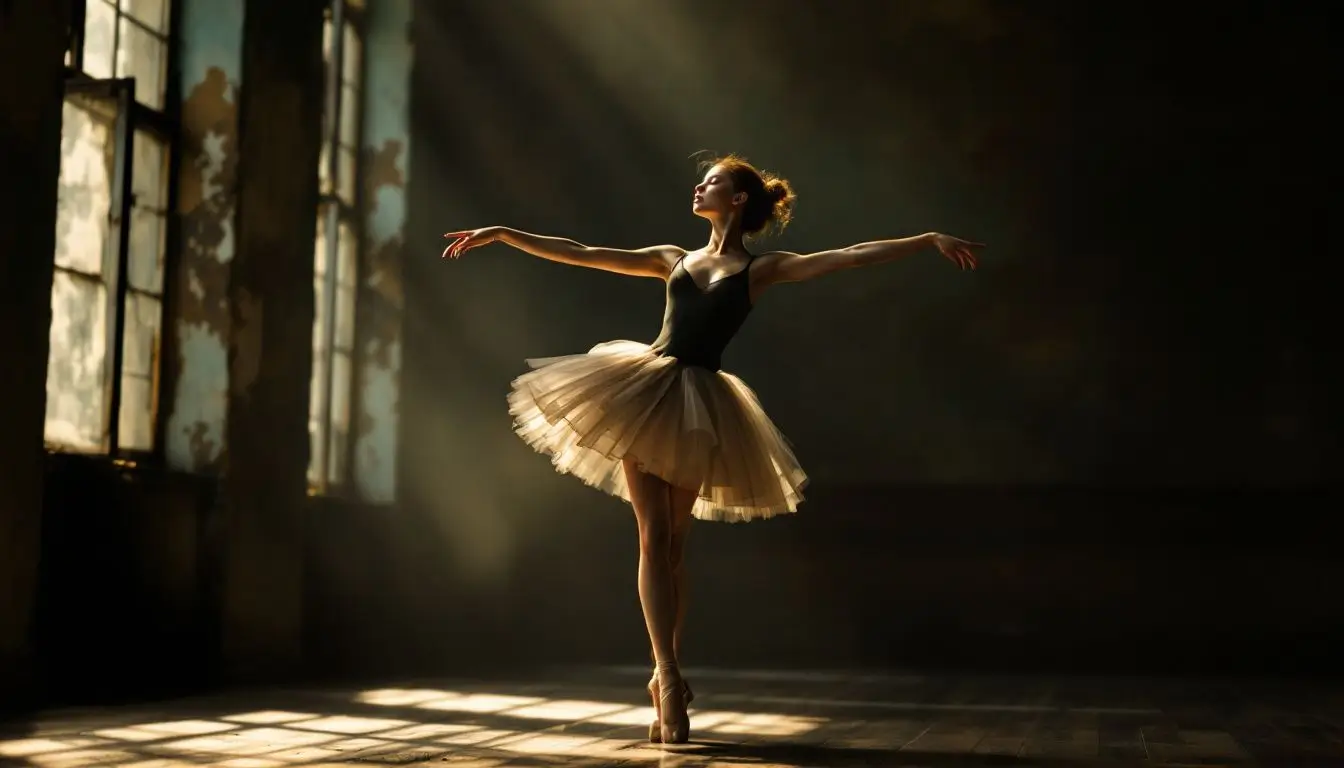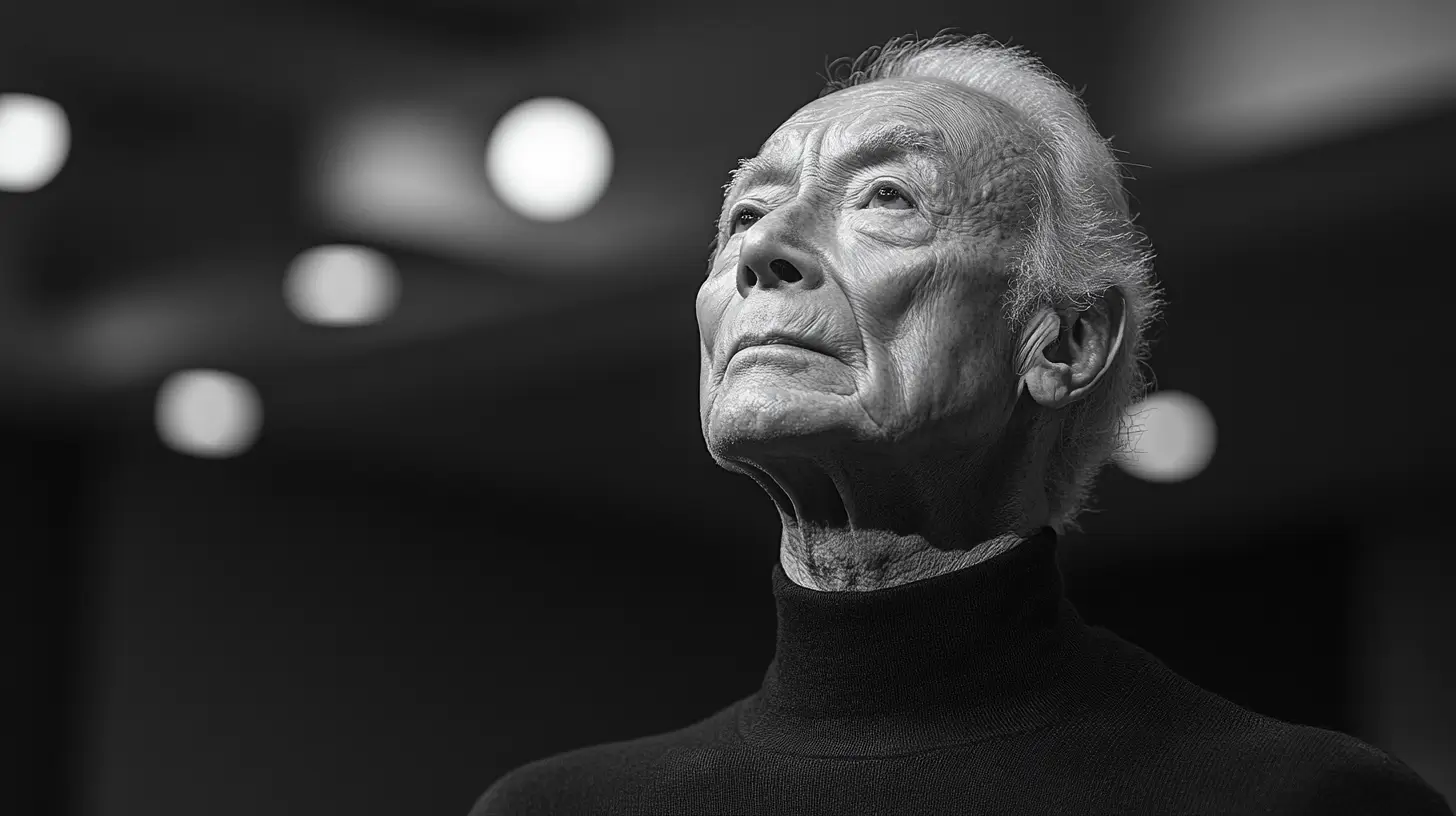George Balanchine, often called the father of American ballet, was a groundbreaking choreographer and co-founder of the New York City Ballet. Many wonder, “Who is George Balanchine?” His innovative neoclassical style transformed ballet, making him one of the most influential figures in dance history. His works are performed by nearly every major ballet company worldwide. This article explores his early life, major works, and lasting impact on ballet.
Graceful Insights
- Born in Russia, George Balanchine was pivotal in establishing a distinct American ballet tradition through his training and early experiences, including his association with Ballets Russes and his role as a ballet master.
- He founded the School of American Ballet and later the New York City Ballet, where he developed a neoclassical style that revolutionized ballet. This style emphasizes pure dance and minimal narrative.
- Balanchine’s choreography, characterized by speed, athleticism, and collaboration with composers like Igor Stravinsky, significantly influenced American ballet and continues to shape today’s art form.

George Balanchine, born Georgy Melitonovich Balanchivadze on January 22, 1904, was destined for a life in the arts. He was born in St. Petersburg, Russia, and his early exposure to music began with piano lessons, a foundation that would profoundly influence his future work in ballet.
His journey into the world of dance began almost serendipitously when he accompanied his sister to her audition at the Imperial Ballet School. He was accepted and later created the significant work Ballet Imperial during his career.
Balanchine’s formal ballet training took place at the Mariinsky Theatre’s ballet school, where he honed his skills and developed a deep understanding of classical ballet techniques. His education was comprehensive, extending beyond dance to music studies at the Petrograd Conservatory. This dual focus on music and dance would later inform his innovative choreographic style.
The rigors of his training at these prestigious institutions provided Balanchine with a solid foundation in both ballet’s technical and artistic aspects. This period of his life was marked by discipline, creativity, and a burgeoning passion for dance, setting the stage for his future endeavors.
Balanchine’s early experiences in Russia shaped his artistic vision and instilled in him a relentless pursuit of excellence. As he embarked on his career, these formative years would become the bedrock upon which he built his remarkable legacy.
European Beginnings
In 1924, George Balanchine’s life took a dramatic turn when he defected from Russia, seeking greater artistic freedom and new opportunities abroad. This bold move led to pivotal experiences that shaped his career and influenced the ballet world.
In 1925, Balanchine joined the Ballet Russes, a renowned company that significantly shaped his artistic development. With Ballets Russes, he began to explore and experiment with new forms of dance composition; the first ballet Balanchine choreographed his first work in 1920. This period of his life was marked by intense creativity and innovation as he pushed the boundaries of traditional ballet.
The Russian Revolution and early 20th-century cultural shifts offered a unique context for Balanchine’s work. His adaptability and resilience highlighted his visionary approach to dance.
Journey to America
At 29, Balanchine moved to the United States to lead the School of American Ballet. This move was significantly influenced by his meeting with Lincoln Kirstein in 1933, who envisioned the establishment of ballet tradition at Lincoln Center. Together, they embarked on New York City d on a mission to try to train dancers—the school scene.
To train dancers, Balanchine and Kirstein founded the S becoming on January 2, 1934, in New York City, which later became the resident ballet company at the Metropolitan Opera. This institution became the cornerstone of their efforts to cultivate a distinct American ballet style. The first performing group from the school was formed in 1935, marking the beginning of a new era in American dance.
Balanchine’s early choreographic work, ‘Serenade,’ was created as a workshop piece for students at the School of American Ballet. This piece showcased his innovative approach to ballet and signified his American debut in choreography. The success of ‘Serenade’ solidified his reputation and set the stage for future achievements.
His vision and dedication laid the groundwork for the New York City Ballet. Moving to America marked the start of a transformative period in his career, and he left an indelible mark on the world of dance.
Founding New York City Ballet

Establishing the New York City Ballet in 1946 was a defining moment in George Balanchine’s career. Emerging from the Ballet Society, the New York City Ballet quickly became one of the foremost ballet companies in the world. Balanchine was the artistic director, chief choreographer, and ballet master, shaping the company’s creative vision.
Balanchine’s innovative choreography and dedication to the neoclassical style set the New York City Ballet apart. Works like ‘Apollo,’ ‘The Nutcracker,’ and ‘Don Quixote’ exemplified his ability to blend classical techniques with modern elements, creating a unique and compelling repertoire. His vision for the company was not just about performance but about creating a lasting legacy in the ballet world.
Under his leadership, the New York City Ballet became renowned for its distinctive style and artistic excellence. His influence as a ballet choreographer covered choreography and the overall aesthetic, from minimalist costumes to innovative stage designs.
The New York City Ballet’s success was a testament to Balanchine’s genius and ability to inspire and elevate the art form. His contributions transformed the company into a global standard-bearer for ballet, influencing countless dancers and choreographers worldwide.
Choreographic Style and Innovations

George Balanchine’s choreographic style was a groundbreaking blend of classical ballet and modern dance. He developed a neoclassical style that integrated traditional ballet elements with abstract and contemporary movements, creating a new and dynamic form of expression. This approach allowed him to push the boundaries of ballet and captivate audiences with innovative and visually stunning performances.
One of Balanchine’s most notable contributions was his preference for plotless ballets. By focusing on the artistry of movement rather than narrative content, he shifted ballet’s emphasis to pure dance. This minimalist aesthetic, often characterized by simple costumes and sets, highlighted the dancers’ movements and the musicality of les ballets.
Balanchine’s formal musical education enabled him to collaborate effectively with composers like Igor Stravinsky, enhancing the connection between choreography and music. His emphasis on speed, athleticism, and precision in his choreography represented a significant evolution within classical ballet. These innovations defined his work and influenced future generations of dancers and choreographers.
Major Works and Collaborations
Among George Balanchine’s significant works is Jewels, his first full-length ballet without a plot. This piece exemplified his innovative approach to ballet, focusing on the beauty of movement and the interplay between music and dance. Other notable works include Symphony in C and Concerto Barocco, which showcased his expansive choreographic talents.
Balanchine’s collaboration with composer Igor Stravinsky was a defining aspect of his career as the foremost contemporary choreographer. Together, they created significant ballets such as Stravinsky Violin Concerto and Agon, highlighting the seamless integration of music and choreography. Balanchine viewed this partnership as pivotal, significantly shaping his artistic vision.
In addition to his classical works, Balanchine made substantial contributions to Broadway musicals and other new and experimental ballets. His talent for bridging different dance forms and incorporating various artistic elements made him a leading contemporary choreographer. His diverse repertoire of over 465 works remains a testament to his creativity and enduring influence.
Balanchine’s partnerships extended beyond Stravinsky, involving other composers and artists. These partnerships enriched the ballet world with innovative performances, enhanced his work, and pushed the boundaries of what Balanchine’s choreographed ballet could be.
Awards and Recognition
George Balanchine’s extraordinary contributions to ballet did not go unnoticed. Over his illustrious career, he received numerous awards and honors, celebrating his artistic genius and lasting impact on the dance world.
In 1980, Balanchine was awarded the Presidential Medal of Freedom, the highest civilian honor in the United States, recognizing his profound influence on American culture. That same year, he also received the National Medal of Arts, the highest award given to artists and patrons of the arts by the U.S. government, further cementing his legacy as a transformative figure in the arts.
Two years earlier, in 1978, Balanchine was honored with the Kennedy Center Honors, a prestigious award that celebrates lifetime contributions to American culture through the performing arts. This accolade highlighted his role in shaping the landscape of American ballet.
Balanchine’s impact was also recognized at the city level. In 1967, he received the Handel Medallion, New York City’s highest award for outstanding contributions to the arts. This honor underscored his significant influence on the cultural fabric of New York City, home to the New York City Ballet, which he co-founded.
Balanchine’s contributions to dance were acknowledged early on. In 1963, he received the Dance Magazine Award, a testament to his innovative choreography and artistic vision. In 1965, he was elected to the American Academy of Arts and Sciences, a prestigious honor recognizing his contributions to the arts and sciences.
Balanchine’s influence extended into academia. He was awarded honorary degrees from several esteemed institutions, including Harvard University, Yale University, and the Juilliard School, reflecting his profound impact on the arts and education.
His legacy continues to be celebrated through various awards and scholarships, such as the Balanchine Trust’s annual awards for excellence in ballet. The New York City Ballet, which he co-founded, remains one of the leading ballet companies in the world, with his choreography continuing to be a cornerstone of the company’s repertoire.
Through these numerous accolades, George Balanchine’s enduring influence on ballet and the arts is continually recognized and celebrated, ensuring his contributions will inspire future generations of dancers and choreographers.
Impact on American Ballet

George Balanchine’s impact on American ballet is immeasurable. As the most significant choreographer of classical ballet in 20th-century America, his influence reached far beyond American shores. At the time of his passing, more than 60 dance companies worldwide were performing his works, underscoring his global reach.
His choreography emphasized speed and lightness, introducing groundbreaking movements like the overhead lift. His minimalist costume approach, often using simple black-and-white apparel, highlighted the dancers’ movements and transformed traditional ballet aesthetics. However, his focus on aesthetics also drew criticism for promoting unhealthy body standards within the ballet community.
Balanchine’s vision transformed American ballet, emphasizing visual spectacle and artistic expression over narrative content. His legacy continues to shape the direction of contemporary ballet, inspiring dancers and choreographers to explore new possibilities within the art form.
Later Years and Legacy
In his later career, George Balanchine continued to innovate and influence the ballet world. His contributions led to the establishment of the George Balanchine Foundation, which aimed to preserve and promote his choreography for future generations. This foundation plays a crucial role in maintaining his legacy and ensuring that his work continues to inspire and educate.
Balanchine passed away in 1983, leaving a profound legacy that transformed American ballet. His influence is global, with ballet companies worldwide adopting and performing his unique choreographic style. His vision and dedication have left a lasting impact on the art form, shaping contemporary ballet’s direction.
Balanchine’s legacy is a testament to his genius and ability to elevate ballet to new heights. His work inspires and influences dancers, choreographers, and audiences worldwide, ensuring that his contributions to the art form will be remembered for generations.
Resume
George Balanchine’s journey from a young ballet student in Russia to the father of American ballet is a story of vision, innovation, and dedication. His early life and training provided the foundation for his groundbreaking career, while his European beginnings and eventual move to America marked significant milestones in his artistic development.
As the co-founder of the New York City Ballet, Balanchine’s influence extended far beyond choreography, shaping the very essence of American ballet.
Balanchine’s choreographic style and innovations transformed the ballet world, emphasizing speed, athleticism, and the beauty of movement. His major works and collaborations, particularly with Igor Stravinsky, showcased his expansive creative talents and lasting contributions to the art form.
Balanchine’s impact on American ballet and his enduring legacy inspire and elevate the dance world, ensuring that his contributions will be remembered for future generations.
Frequently Asked Questions
What are some of George Balanchine’s most famous works?
George Balanchine’s most renowned works include The Nutcracker, Don Quixote, Jewels, Symphony in C, and Concerto Barocco. These masterpieces, celebrated for their innovative choreography and artistic excellence, have impacted ballet.
How did George Balanchine influence American ballet?
George Balanchine created and fundamentally transformed American ballet by co-founding the New York City Ballet and developing a neoclassical style emphasizing speed, athleticism, and the beauty of movement. His innovative approach has left a lasting impact on the ballet landscape in the United States.
What was George Balanchine’s relationship with Igor Stravinsky?
George Balanchine collaborated profoundly with Igor Stravinsky, creating influential ballets like ‘Stravinsky’s Violin Concerto’ and ‘Agon.’ This partnership significantly shaped Balanchine’s artistic vision for musical theater and the interplay between music and choreography.
What is the George Balanchine Foundation?
The George Balanchine Foundation is dedicated to preserving and promoting Balanchine’s choreography, ensuring his artistic legacy continues to inspire and educate future generations of dancers and choreographers.
How did Balanchine’s early life influence his career?
Balanchine’s formative years in St. Petersburg, where he received rigorous training in both piano and ballet, laid a strong foundation for his innovative choreographic style and artistic vision throughout his career. This combination of music and dance education profoundly shaped his contributions to the ballet world.







